Just a question though, If Turkey is developing Gezgin cruise missile, then why are they developing a different cruise missile known as Cakir?It's development of engine project to be used in Gezgin cruise missile AFAIK.
You are using an out of date browser. It may not display this or other websites correctly.
You should upgrade or use an alternative browser.
You should upgrade or use an alternative browser.
TR Propulsion Systems
- Thread starter Combat-Master
- Start date
Çakir will be half size of SOM/Atmaca and Gezgin will be like twice size.Just a question though, If Turkey is developing Gezgin cruise missile, then why are they developing a different cruise missile known as Cakir?
Çakir will be half size of SOM/Atmaca and Gezgin will be like twice size.
If the specs are the same, shouldnt Turkey throw Gezgin away or are they different in capabilities
Mehmed Ali
Contributor
Gezgin is like TomahawkIf the specs are the same, shouldnt Turkey throw Gezgin away or are they different in capabilities
Gezgin is long range cruise missile .. its the turkish version of american tomahawk ... Its very critical and dangerous weaponJust a question though, If Turkey is developing Gezgin cruise missile, then why are they developing a different cruise missile known as Cakir?
Kale Group Deputy Chairman of the Board of Directors and Head of Technical Department Osman OKYAY also touched upon the ARAT Project and said that the project started as of November 2021 after the approval of SSİK and that they aim to complete it in 30 months and reveal the engine, although a 40-month calendar is presented in the project.
Since a different page is given to the Arat project in the presentation, It will result in the birth of such a family in Kale's turbojet projects
| Name | Thrust | Weight | Altitude | Missile |
| KTJ1750 | 1750N | 17kg | 10000m | Çakir family Missiles |
| KTJ3200 | 3200N | 50kg | 5000m | SOM - ATMACA family Missiles |
| KTJ3700 | 3700N | 50kg | 10000m | SOM-NG and Atmaca-NG (?) |
| ARAT | ? | ? | ~10000m | Gezgin Missile |
Combat-Master
Baklava Consumer
Since a different page is given to the Arat project in the presentation, It will result in the birth of such a family in Kale's turbojet projects
Name Thrust Weight Altitude Missile KTJ1750 1750N 17kg 10000m Çakir family Missiles KTJ3200 3200N 50kg 5000m SOM - ATMACA family Missiles KTJ3700 3700N 50kg 10000m SOM-NG and Atmaca-NG (?) ARAT ? ? ~10000m Gezgin Missile
tei: We are trying to make the tj-90 engine work at the desired altitude.
I compared the kale with tei and criticized it a lot.
at the end of the day they definitively passed tei in turbojet engines.
Congratulations kale.
I compared the kale with tei and criticized it a lot.
at the end of the day they definitively passed tei in turbojet engines.
Congratulations kale.
If ioanis dayilik have twitter account, somebody should post the news about Gezgin engine
KTJ-3700

The reason why the KTJ-3200 10 years is finished is explained. Ther was no infrastructure, no material and knowledge.
Kervan yolda duzelir.
That means Kale was not fit for the job but TEI was.
That means Kale was not fit for the job but TEI was.
Not really, he have explained why. Just listen the video.
It's strange how they get the project without infrastructure and know-how. However, I assume this choice paid off, Kale now has the experience, know-how, and infrastructure. It is better to have more companies developing engines.That means Kale was not fit for the job but TEI was.
Not really, he have explained why. Just listen the video.
They simply wanted to create a second turbine engine maker.
Idealab and Black Sea Shield should join the party.
Combat-Master
Baklava Consumer
Kale Group Vice Chairman of the Board and Head of the Technical Department Osman OKYAY announced the start of the mass production of KTJ-3200 and that the first 50 engines will be delivered in 2022...
View attachment 42778
50 engines per year is good, they also said that if it's necessary they can expand their production capacity. It seems, they may have to with the new orders of engines that will soon com flooding in with Cakir Mini Cruise Missile...
Is there a chance that we are finally taking steps to fixing the conflicting projects problem?
It could be that small missile engines will be developed by Kale(or other companies) and TEI will focus on bigger engines.
I hope thats the case. TEI is overextended as it is. There is no need for them to allocate resources to develeop smaller engines if there are other feasible alternatives.
It could be that small missile engines will be developed by Kale(or other companies) and TEI will focus on bigger engines.
I hope thats the case. TEI is overextended as it is. There is no need for them to allocate resources to develeop smaller engines if there are other feasible alternatives.
they had to make rd and produce up to the screw of the engine. they have set up adequate infrastructure. production times for new engines will be very short in future projects.That means Kale was not fit for the job but TEI was.
NitricAcid
Active member
Kale R&D and National Turbojet Engine Solutions
The 'Turbojet Engines Development Project Agreement' signed on February 22, 2012 is considered an important milestone in the development of the Turkish Defense and Aviation Industry. While the Turbojet Engines Development Project, carried out by Kale Arge under the administration of the SSB, was planned to be completed in 4 years, since the ecosystem required for the development of gas turbine engines in our country did not exist at that time, the Company created a gas turbine engine from scratch as well as turbomachinery design, Electronic Control Unit, Control Software, Fuel. It could only be completed in 10 years since it had to be developed with all sub-systems and test infrastructure including the Control System, Alternator and Igniters.
April 22, 2022İbrahim SÜNNETCI & Saffet UYANIK
Although the development of the KTJ-3200, which is the first national turbojet engine optimized for use on unmanned platforms, has turned into a very tiring and challenging process for Kale R&D Company, the Company today, with its know-how, competent manpower and technical infrastructure, gained from this project both in Turkey and abroad. KTJ Series can carry out 4 different turbojet engine development projects at the same time, for domestic and foreign customers.
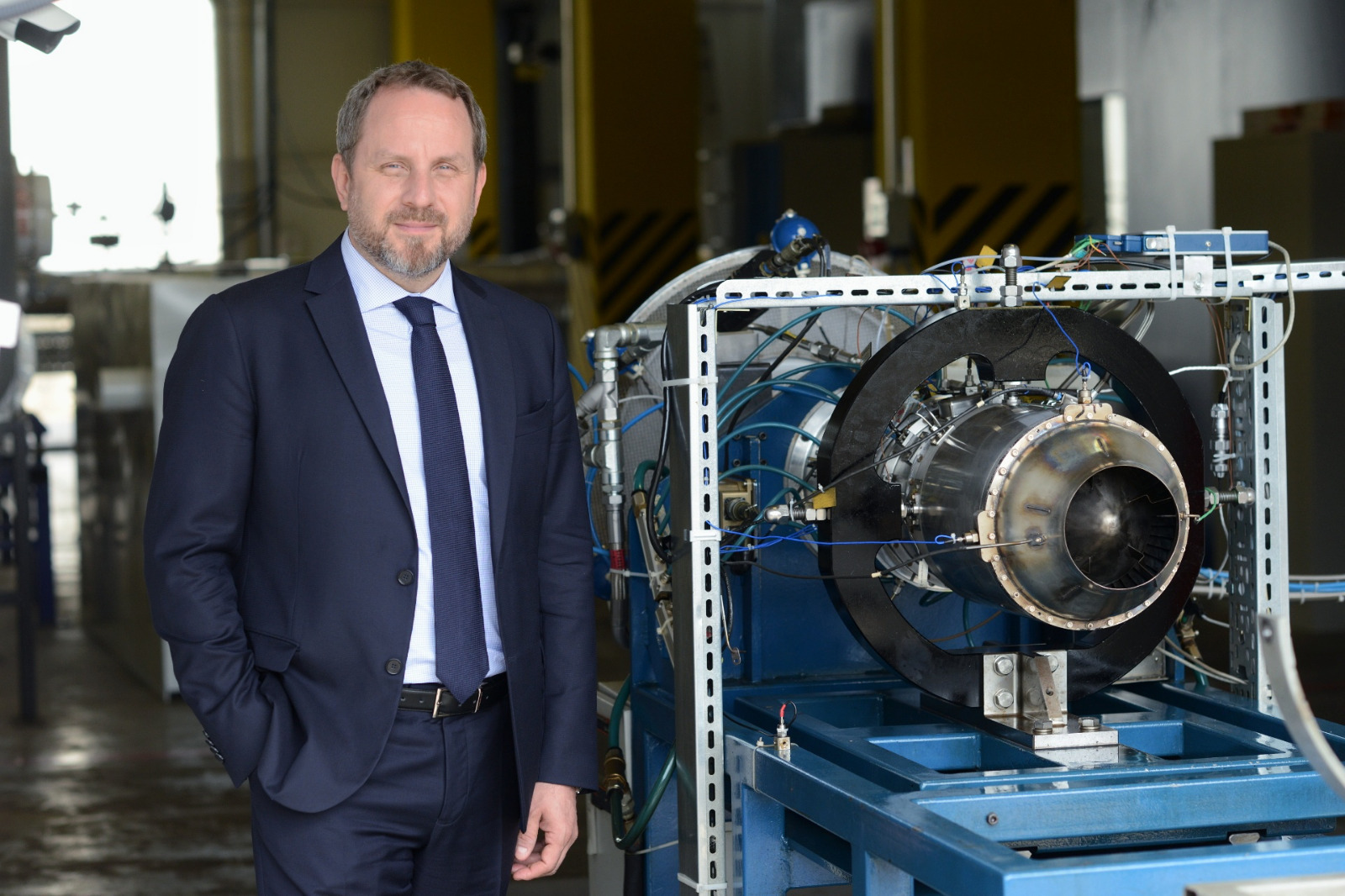
Speaking at the 1st Aviation and Space Propulsion Systems Congress held at Gebze Technical University on April 20, 2022, Kale Group Vice Chairman of the Board of Directors and Head of Technical Department Osman OKYAY said, “The Turbojet Engines Development Project of Kale Arge, one of the 9 companies within the Kale Group. He conveyed to the audience the difficulties he experienced while developing the KTJ-3200 Turbojet Engine, the lessons learned, the capabilities gained, and the new turbojet engine projects that could be implemented in a short time as a result of these capabilities, with striking information.
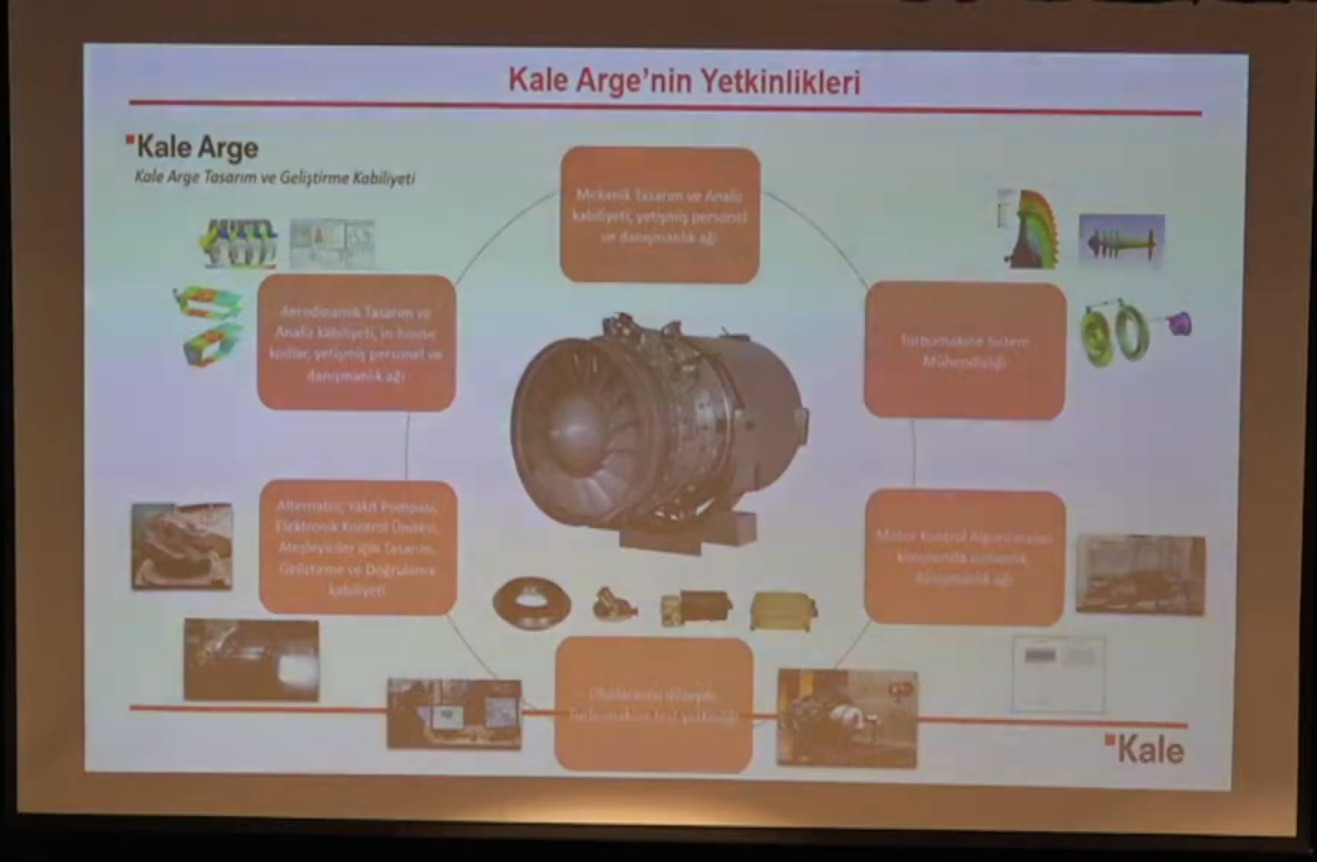
Turbojet Engines Development Project and KTJ-3200 Development Process
Kale Arge Company was established in 2013 to conduct research and development studies on subjects falling within the vision fields of Kale Group Technical Group Companies. Under the 'Turbojet Engines Development Project Contract', Kale Arge assumed the responsibility of developing the KTJ-3200 Turbojet Engine, which will be completely domestic and national, including all its controls and accessories. Turkey had to develop all the technology and critical sub-systems needed, as there is a serious deficit in terms of the technological infrastructure and the ecosystem in Turkey. For example, At that time, there was no company in Turkey that had previous studies and experience on the Electronic Control Unit, Fuel Pump, Pyrotechnic Igniters, Alternator and Bearing, which are the critical sub-systems of the KTJ-3200 Turbojet Engine. Therefore, Kale Arge had to develop and produce not only the core and main system of the engine, but also its sub-systems within the Kale Group, that is, it also carried out R&D during the product development process. However, the most ideal product development process starts after the development of the technologies to be used in the product. When we look at the world, we see that engine manufacturers first develop the sub-critical technologies that will enter that engine and then develop the engine. In his speech, OKYAY defined attempting to build an engine without critical technology as “the biggest mistake that can be made”.
Therefore, Kale Arge carried out both P&D and R&D activities under the Turbojet Engines Development Project. pioneered the formation of the ecosystem. In this process, for example, more than two years were spent for the acquisition and production of pyrotechnic igniter technology (it is not easy to start the engine in a missile flying at about 1 Mach sound speed at an altitude of 5,000 meters, it is like trying to light a cigarette in a 150km/h wind). . While the bearings used in the engine were previously available from abroad, there was a problem in the supply of bearings on the grounds that the KTJ-3200 Engine would be used in missiles. Currently, bearings of different structures and types can be produced according to the needs of the turbojet engine.
Within the scope of the Turbojet Engines Development Project, Kale Arge also achieved many important technological achievements, primarily mechanical design analysis, aerodynamic design analysis, system engineering on turbo machines and engine control algorithms. As a result, at the end of a very tiring and challenging process, critical sub-systems such as Electronic Control Unit, Fuel Pump/Fuel Control System, Pyrotechnic Igniters, Alternator and Bearing, which are critical sub-systems to be used in small turbojet engines, have now turned into off-the-shelf products. the way for new engine development projects has been opened.
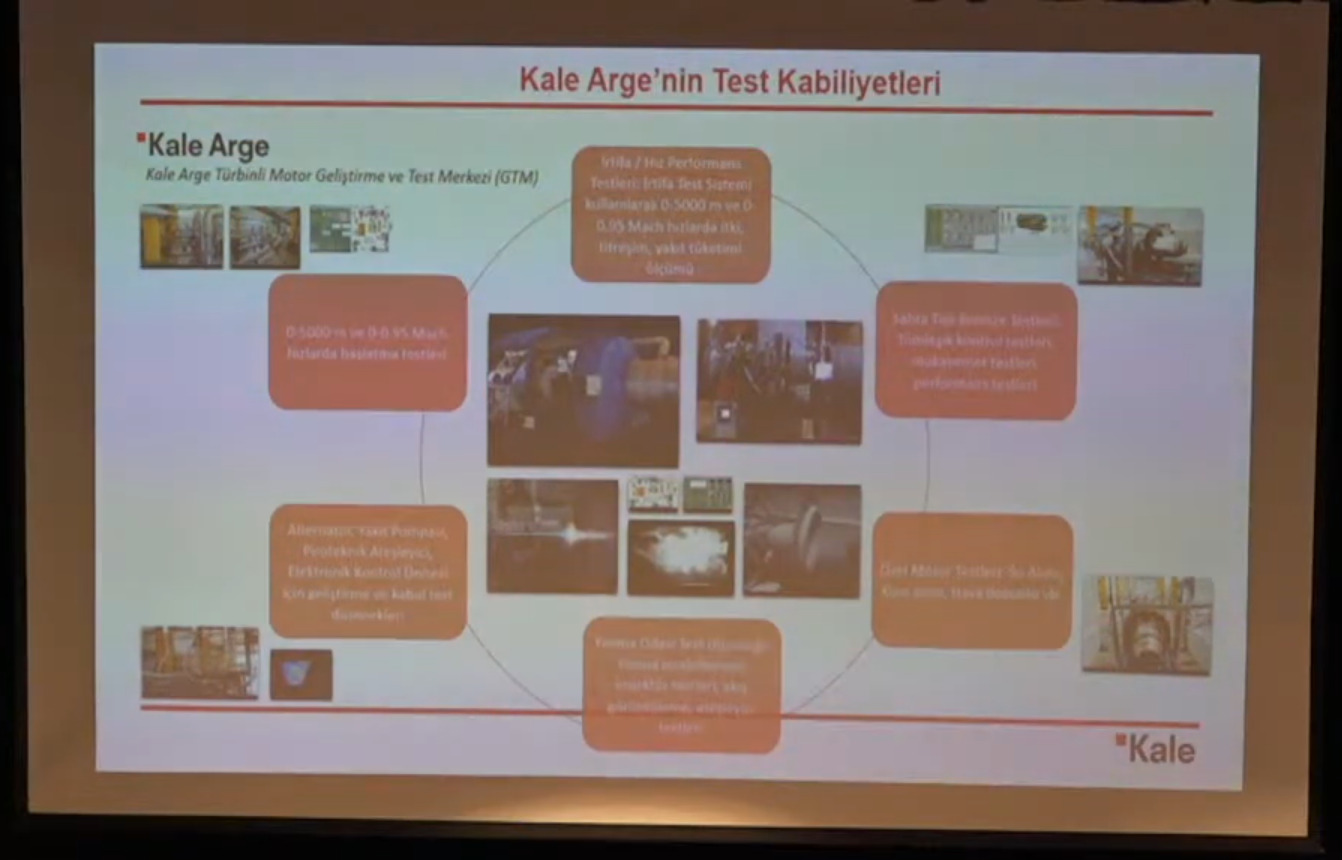
Undoubtedly, one of Kale Arge's most important achievements during the development of the KTJ-3200 Engine is the Altitude Test System, which is the product of nearly two years of effort. All control software, test control system software and software running on computers that collect engine data, used in the Altitude Test System located in the Kale Arge Tuzla Development and Test Center campus, were developed by Kale Arge, where the engine was tested at an altitude of 5,000 meters (15,000ft) and speeds up to 0.95 Mach. can be achieved. Emphasizing that the Altitude Test System, whose infrastructure work took about 2 years, is of vital importance for the turbojet engine development process, OKYAY said, “It is not possible to develop an engine by testing it only in the bremze. You can never be sure of how the engine will behave at altitude.
Kale Arge also continues its studies to increase the working/test altitude conditions of the Altitude Test Arrangement/System to 10,000 meters for the tests of both the ARAT Project and the KTJ-3700 Turbojet Engine. In this way, the weather conditions 10,000m above the ground will be simulated and it will be possible to observe how the engine behaves in those conditions with the tests.
OKYAY shared the following information about the working characteristics of the Altitude Test Rig/System: “Here, you produce 10kg of air per second in your compressors, then you dry that air because the air is dry above and you cool it down to -50°C. Take these values between 0°C, -50°C and 0m, 5.000m, of course. After that, you feed this air into the mouth of the engine, because such air enters the mouth of the engine when it flies. Then you take this engine into a chamber and vacuum it up to 0.3 bar because the pressure is low at high altitude. Thanks to this infrastructure, you can test at any altitude (between 0 and 5,000 meters), at any air temperature (between 0°C, -50°C) and at any flight speed. You enter these data, the system adjusts accordingly and performs the altitude test. You collect the data obtained from here with the engine data on another computer working simultaneously with the Test Control Computer, so that you can make a one-to-one match. To see how the engine behaves at what altitude, temperature, speed. Those two computers have to work very well with each other.”
In
addition to the Altitude Test System, Kale Arge Tuzla Development and Test Center also has a Field Type Test Rig (Bremze) and Combustion Chamber Test System, as well as Control and Accessory Test Rigs for sub-systems such as Alternator, Fuel Pump, Pyrotechnic Igniter and Electronic Control Unit. Field type tests are very important especially for strength tests, and special engine tests such as water intake, sand intake and air disturbance are performed here.
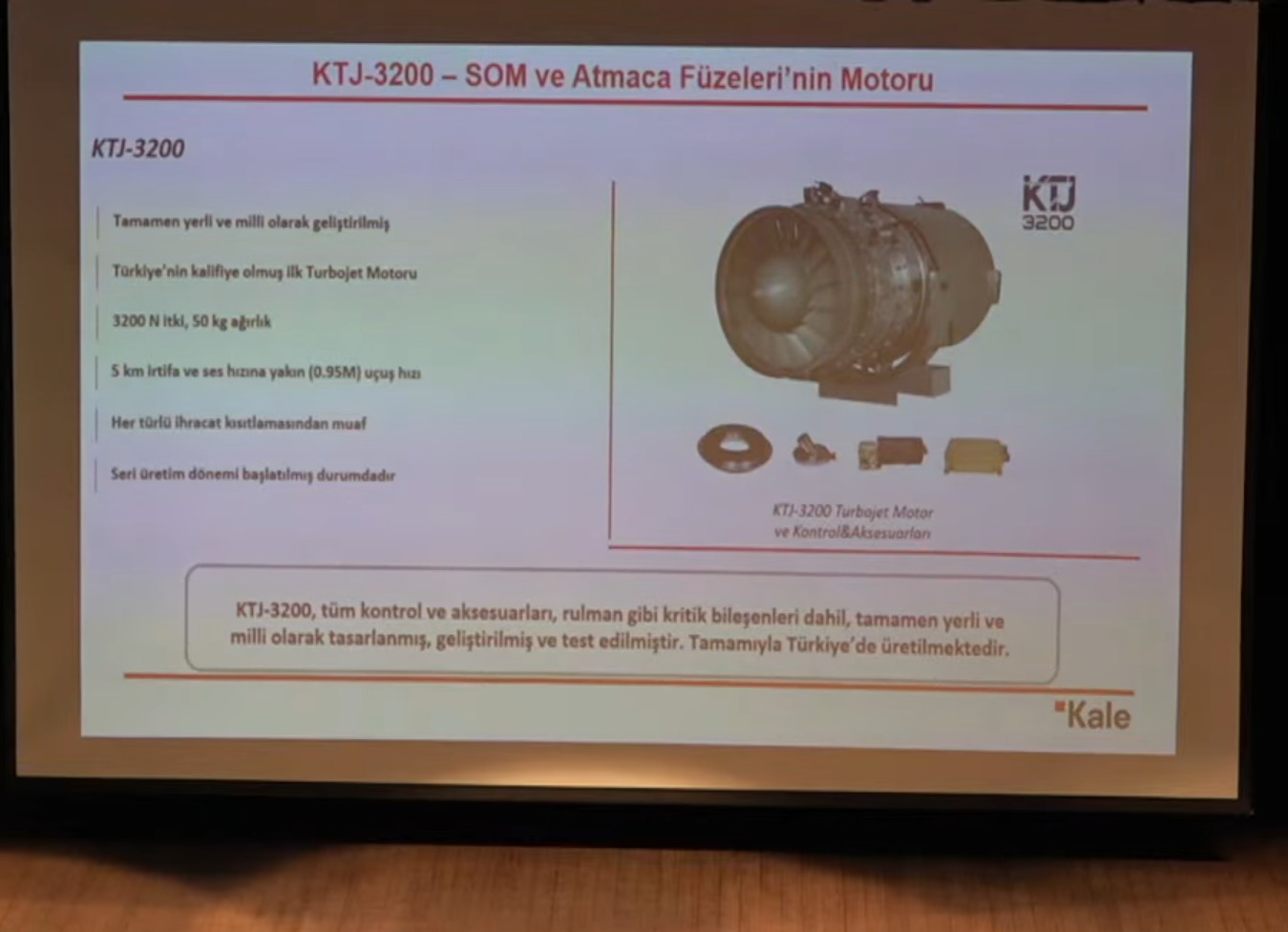
KTJ-3200
Kale Arge's first engine, KTJ-3200, was developed for SOM (SAGE) and ATMACA (ROKETSAN) Missiles. KTJ-3200 Turbojet Engine, consisting of a 4-stage axial compressor, annular combustion chamber and a single-stage turbine, with a thrust power of 3,200N (Newton), is 63cm in length, approximately 30cm in diameter and 50kg in weight. KTJ-3200, which has low fuel consumption and can be launched at different altitude/speed conditions, is designed to operate at 5,000m altitude and Mach 0.95 speed in accordance with the duty envelope of SOM ALCM and ATMACA Anti-Ship Cruise Missile. The Altitude Test System in the Kale Arge Tuzla Development and Test Center campus played an important role in the development and testing process of the KTJ-3200, which has a pyrotechnic igniter and windmilling feature. Developed completely domestically and nationally, the engine is exempt from all export restrictions and all its components are produced in Turkey. The qualification process of the KTJ-3200 Engine has been successfully completed and mass production has begun. In the first phase, 50 units are expected to be delivered this year.
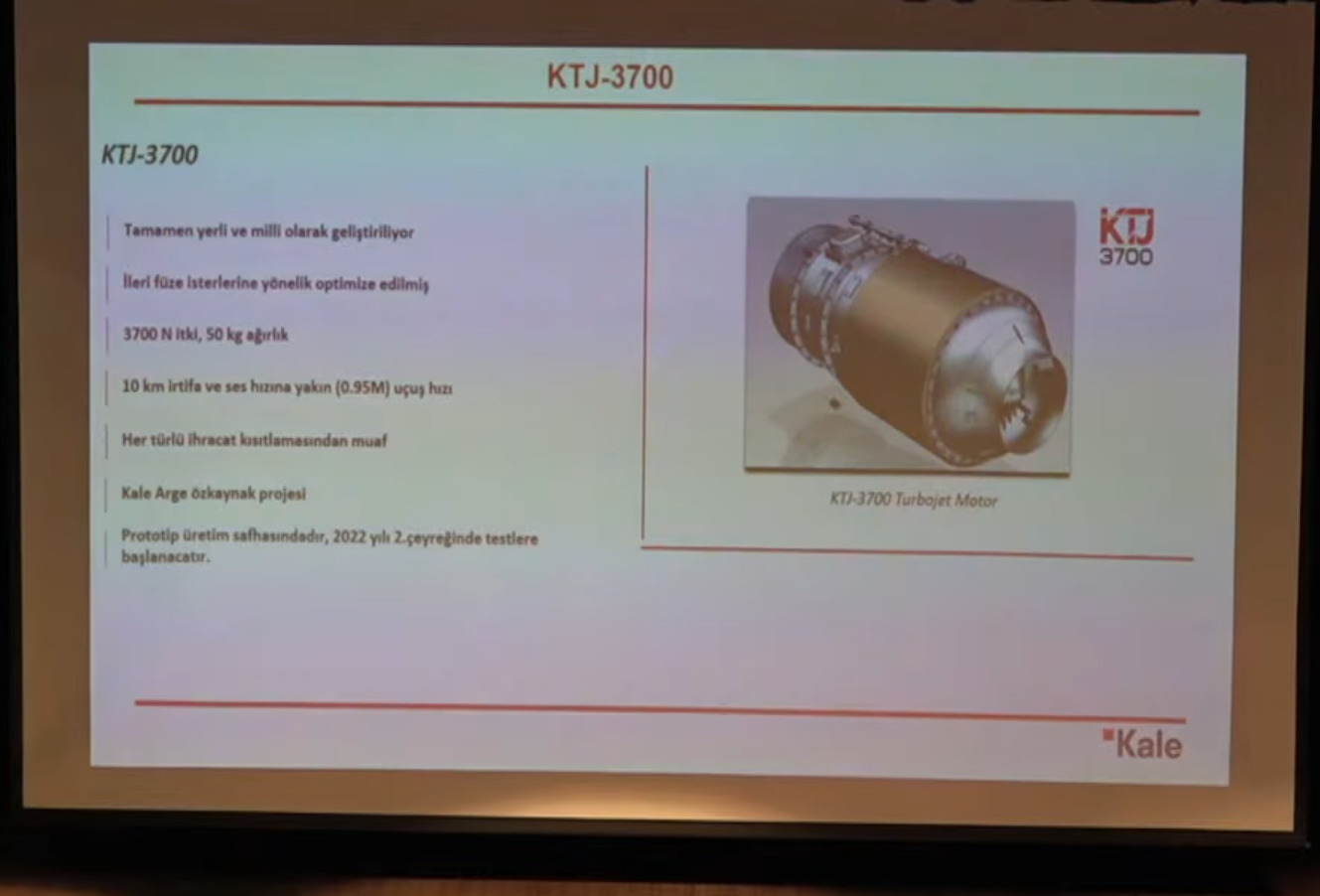
KTJ-3700
Producing more thrust than KTJ-3200, KTJ-3700 is a project of Kale Arge with its own resources. It is aimed to weigh 50kg, have an altitude of 10,000 meters and a flight speed of 0.95 Mach. Kale Arge continues its studies to increase the parallel test setup to 10,000 meters. It is planned to start tests with the KTJ-3700 in the second quarter of 2022, following the completion of the work on the test setup.
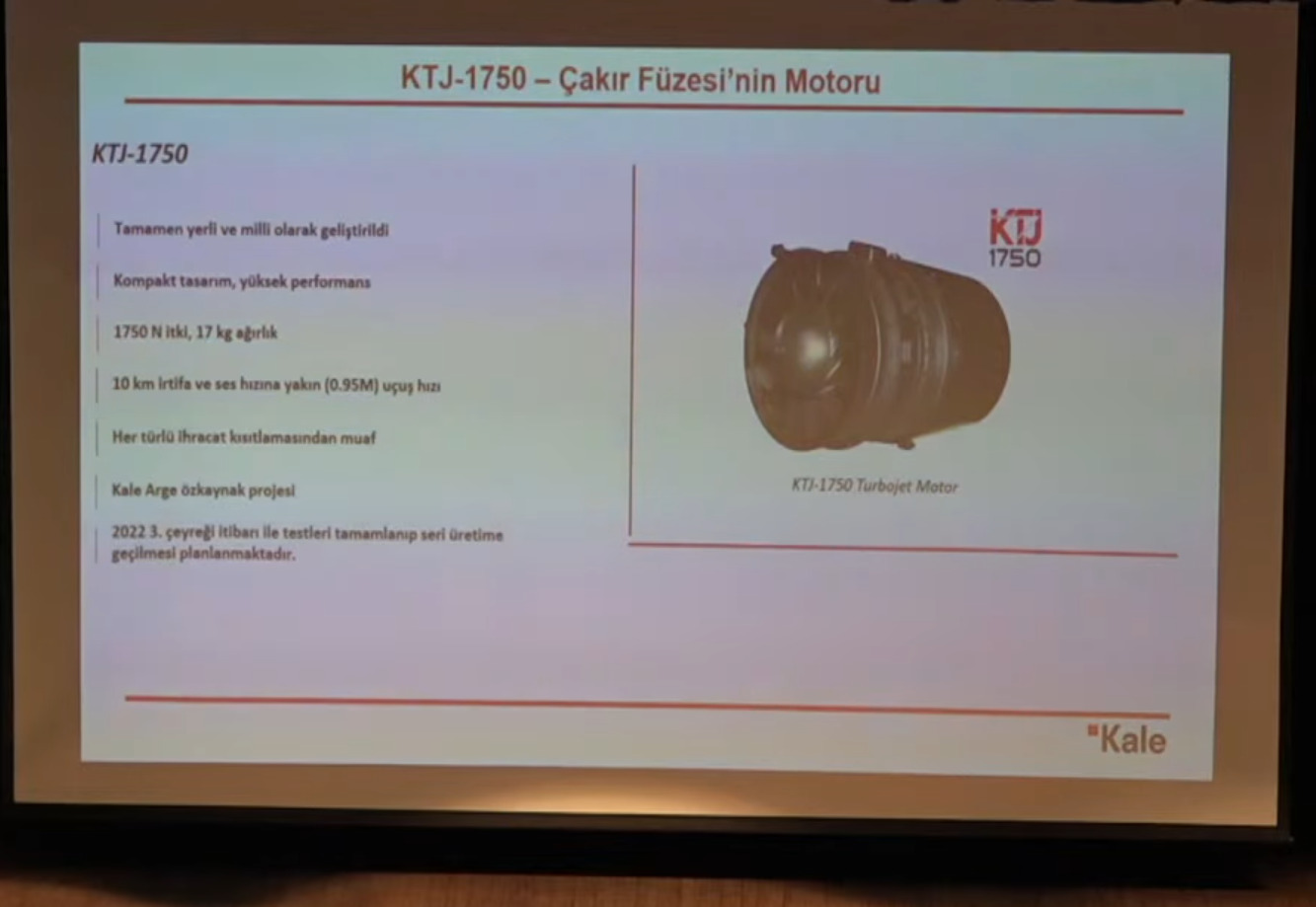
KTJ-1750
The smaller engine, the KTJ-1750, is expected to have a power of 1,750N, a weight of 17kg and a speed of Mach 0.95. It is planned to complete the tests and start mass production in the third quarter of 2022.
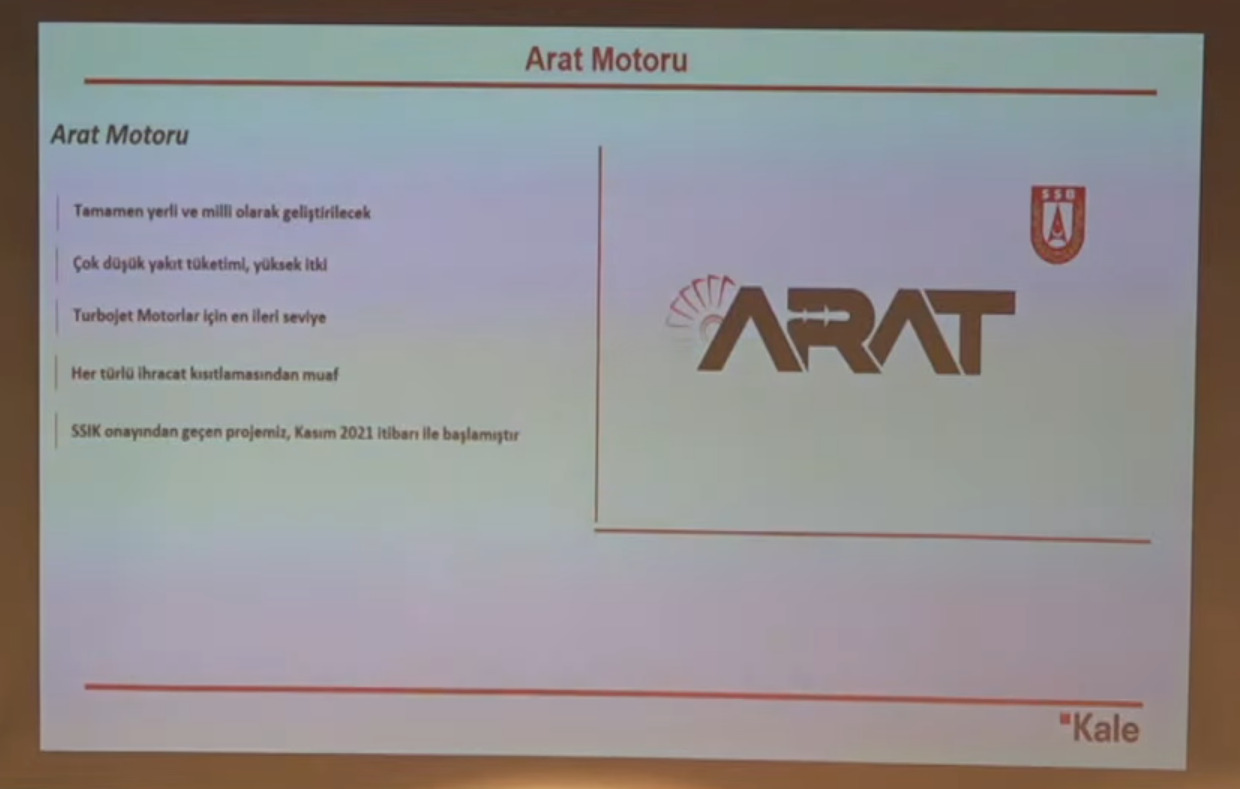
ARAT Engine
It is a turbojet engine to be developed locally and nationally by Kale Arge. Very low fuel consumption and high thrust capacity are expected. Aiming to be an advanced engine, ARAT will be exempt from all kinds of export restrictions as in other engines. The ARAT Project was started as of November 2021, after the approval of SSİK. Although the date given for the development process is 40 months, Kale Arge aims to complete the project in 30 months.
Editor's Note:
Kale Arge carries out the Serial Production of the KTJ-3200, a completely domestic and national turbojet engine, including all its controls and accessories, critical components such as bearings (made of steel material), entirely with domestic resources and especially with the maximum use of Kale Group's technical capabilities. The year 2022 will pass with both the integration and serial production of the KTJ-3200 and the qualification of new engines. Kale Arge will further enlarge and develop its production and test infrastructure in this process. Kale Arge General Manager Cüneyt KENGER shared the following information about Kale Arge's current production and testing infrastructure and annual production capacity in the interview we held in our 110th issue: “Kale Arge acts as an "integrator" in terms of mass production. In other words, we carry out the management of the supply chain, assemblies and testing/evaluation. Our current production plan has been determined as 150 engines per year based on the needs. Our production capacity is well above these numbers...”
Due to their small size and low weight, there is a misconception among the public that small turbojet engines are products that are easy to develop and produce. In fact, the production of an aviation-quality small turbojet engine for aircraft represents a more challenging process in terms of engineering compared to the production of large turbojet engines. On the other hand, although the Altitude Test Assembly/System represents an important test infrastructure in the small turbojet engine development process, it is possible to develop a turbojet engine without having such a test infrastructure. For example, PBS Velka Bites Company, which is one of the world's leading turbojet engine manufacturers and has an important place in the market, does not have an Altitude Test System as far as I know.
The KTJ-3700 engine is a new engine developed for different conditions with the dimensions of the KTJ-3200 but with its renewed aerodynamic design. It has higher thrust and lower specific fuel consumption thanks to its renewed aerodynamic design (with only aerodynamic improvement in the TR40 TJ Engine, an approximately 8% improvement in fuel consumption was achieved). Fuel lubrication technique is used in both engines. However, Kale Arge also worked on closed circuit oil lubricated versions of engines. Additional weight in engines (such as oil tank, oil hose and pump addition)
Developed under the Improved Turbojet Engine Project, ARAT is a separate engine from the KTJ-3700 and a domestic and unique turbojet engine to be used under the Mass Production Phase of the new cruise missile, which has superior features and longer range than both SOM and ATMACA Cruise Missiles. ARAT is still expected to have similar features to the turbojet engine supplied from abroad for the new cruise missile in question.
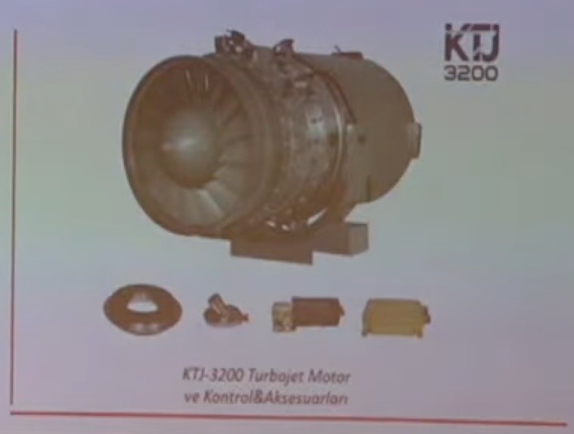
KTJ-3200 TJ Engine and accessories used (from right to left): Electronic Control Unit, Fuel Pump and Fuel Control System, Pyrotechnic Ignitor and Alternator.
Last edited:











